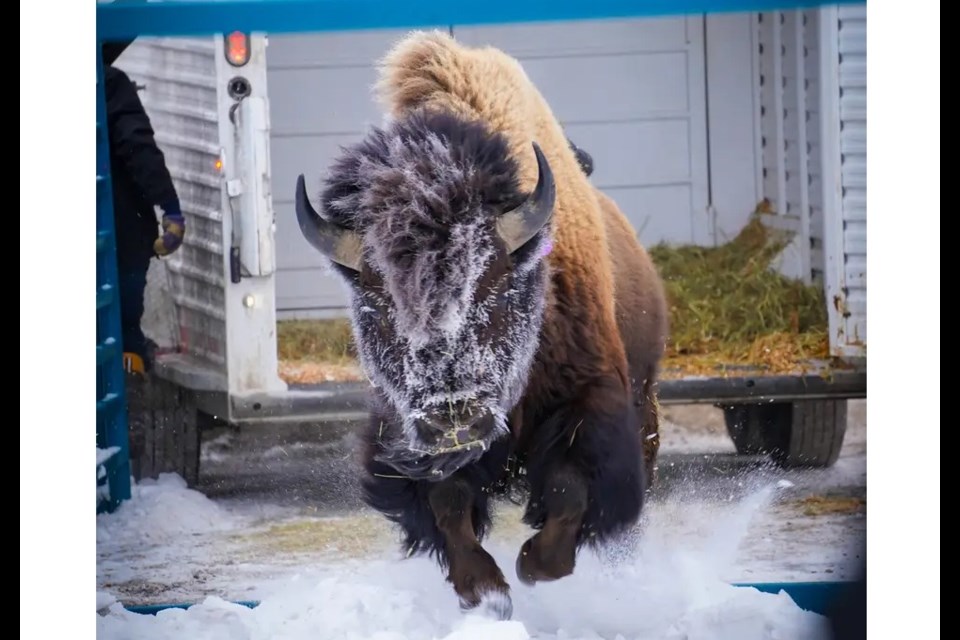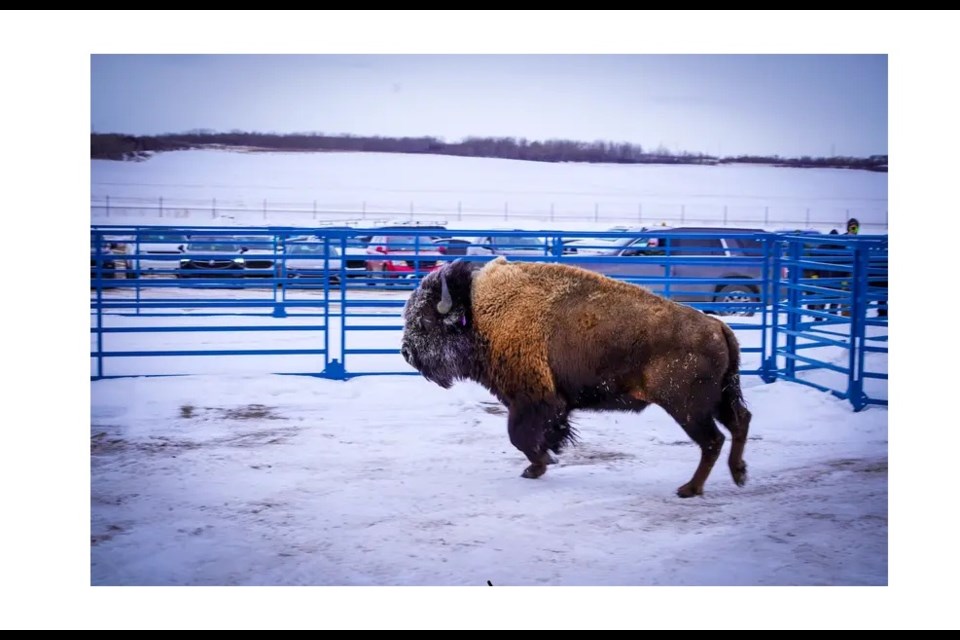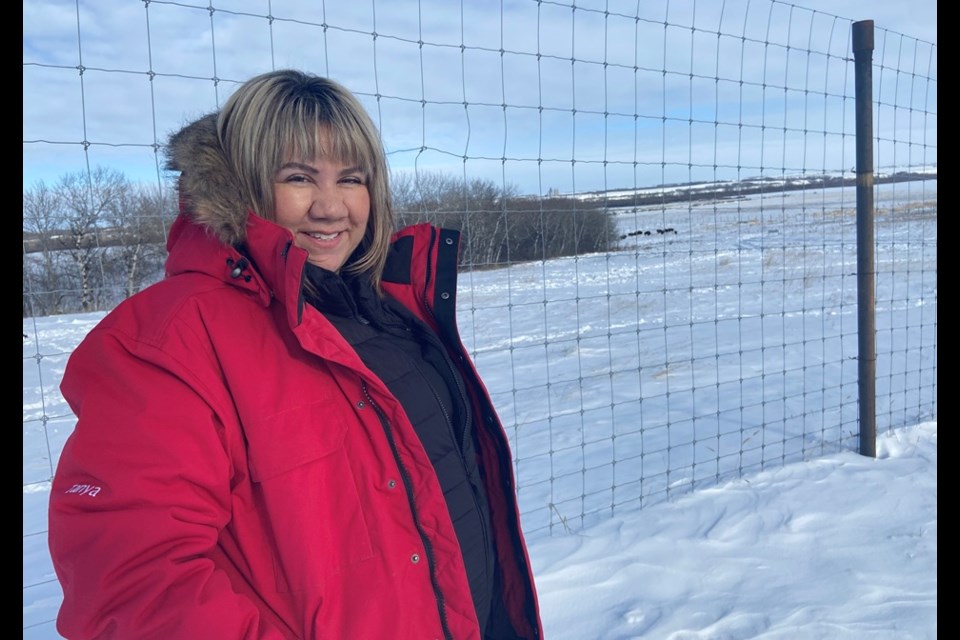MOSQUITO, GRIZZLY BEAR'S HEAD, LEAN MAN FIRST NATION - It was a historic moment for Mosquito, Grizzly Bear's Head, Lean Man recently when the First Nation welcomed home a new herd of bison at the First Nation's land in the Battlefords area.
The family group of 11 Plains bison were moved across the U.S.-Canadian border, as a special gift from the Fort Peck Tribes in Montana to MGBHLM First Nation.
This is the first time, bison from Yellowstone National Park have crossed the border into Canada.
"It's a huge honour for the community to accept the gift of the Yellowstone buffalo," Chief Tanya Stone, of Mosquito, Grizzly Bear's Head, Lean Man First Nation, told SaskToday. "It only adds to the nations [as] buffalo people. We have now the Elk Island [National Park] and the Yellowstone [National Park] herds here. That's the first gifting to a First Nation in Canada, to receive the two herds of buffalo - one from Yellowstone and one from Elk Island. It's a very historic event."
The Yellowstone bison are being kept in a large fenced area on MGBHLM First Nation's land south of the Battlefords, near Highway 4 South.
The gifting of the Yellowstone bison is an initiative that came out of the Buffalo Treaty.
"We signed it [the Buffalo Treaty] in 2022 at the Sweetgrass [First Nation] powwow," Stone said. "The Buffalo Treaty is really a significant part of all of the gifting that has taken place in Nation-to-Nation relations, especially with the Yellowstone [buffalo] as it was a Fort Peck Indian Reservation in the U.S.A. that gifted the buffalo to Mosquito, Grizzly Bear's Head, Lean Man. It's a historic relationship, and it was all because of the Buffalo Treaty."
She noted plans are to increase the Yellowstone herd in the future.
"The relationship ongoing is to grow the herd and gift the buffalo to another First Nation in Canada," Stone said. "That's a really exciting opportunity for us, working with another Nation, the same way Fort Peck worked with Mosquito, Grizzly Bear's Head, Lean Man to make this happen."
She mentioned that more and more First Nations are signing on to the Buffalo Treaty.
"It's a growing Treaty. It's a modern Treaty," Stone said. "It's really about the opportunity to learn and bring back the buffalo, to bring them back home."
To see the bison grazing in the field on MGBHLM land, she said, is a beautiful sight to behold.
The project to bring the bison from Fort Peck to MGBHLM was two and a half years in the making, with many stakeholders working together.
The total area where the bison will be contained, once they have passed their quarantine period, is about 600 acres wide.
It's a very proud time for MGBHLM.
"I cannot stress [enough] the amount of people involved, from beginning to end to make this happen - from our Elders, Knowledge-Keepers, leadership, to young people, and that relationship building with all the stakeholders involved, the non profit groups - everybody there for the buffalo, and the Buffalo Treaty for making this a reality," Stone said. "When we witnessed them - the buffalo - crossing the border, that was an unbelievable feeling because the buffalo have come home."
"Bringing home the buffalo is a huge honour," she added. "There are so many ways it will be a benefit to the Nation, from spirituality, to food sovereignty, to mental health and well-being. I have membership that stop by here and come to see such a beautiful animal. I've had people come and make offerings; that's that spiritual connection. I really truly believe that the buffalo are of benefit to all people. All people can benefit from understanding the history of the buffalo."
Travis Spyglass, bison paddock manager, said the Yellowstone bison herd consists of three bulls, seven cows, and one calf.
The bison were welcomed to the First Nation on Jan. 31.
"I love it," Spyglass said. "I'm honoured to work with the bison. It's a very spiritual animal. These are very beautiful. The same kind as the ones we have, but these are bigger. They have a good bloodline. It goes from back in the day."
To make sure the bison stay in good health, Spyglass ensures they have all their proper nutrients and plenty of water to drink.
"I give them treats, now and then," he adds. "Right now I can feed them around the whole pasture."
"It is a historical occasion," Spyglass said, noting that at one time the buffalo used to run on these lands.
"We're just glad to bring them back," he said, adding that at the same time the animals provide spiritual, economical, and health benefits to the First Nation for the future.






